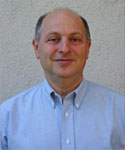
Child Development, Resilience, and the Environment
-
Register
- Non-member - Tier I - Free!
- Non-member - Tier II - Free!
- Non-member - Tier III - Free!
- Non-member - Tier IV - Free!
- Member - Tier I - Free!
- Member - Tier II - Free!
- Member - Tier III - Free!
- Member - Tier IV - Free!
This is a recorded presentation that discusses the many complex interactions that affect health both positively and negatively. The presentation focuses on how environmental exposures and social experiences, particularly during early life, can contribute to resilient outcomes.
Learning Objectives
- Explain an “ecological framework” in regards to health.
- Identify early life factors that can affect adult health.
- Explain “critical time windows.”
- Explain how resilience can help mitigate negative early life factors.
- Discuss environmental justice and its interaction with vulnerability and resilience
Developed By

Mark Miller, MD, MPH
Co-Director PEHSU Western States
Assistant Clinical Professor
University of California, San Francisco
San Francisco, CA
Dr. Mark Miller is an Assistant Clinical Professor in the departments of Pediatrics and Occupational and Environmental Medicine at the University of California San Francisco. He is co-director of the UCSF- Pediatric Environmental Health Specialty Unit (PEHSU) since 2002. He is the director of the Children’s Environmental Health Program for the California EPA and co-investigator with the Center for Integrative Research on Childhood Leukemia and the Environment (CIRCLE) at UC Berkeley. He completed his MD degree and pediatric residency from Michigan State University College of Human Medicine, an MPH in environmental health sciences at U.C. Berkeley, and a residency in preventive medicine with the California Department of Health Services. Dr. Miller spent 13 years as a pediatrician in private practice in a small town in California. He is a co-author of A Story of Health, a multimedia book examining multiple environmental contributors to health and how they interact with genetics across the lifespan.
With assistance from:
- Christine Zachek, MPH
- Vickie Leonard, RN, PhD
- Brian Tencza, M Ed.
Disclaimer
This material was developed by the Association of Occupational and Environmental Clinics (AOEC) and funded under the cooperative agreement award number 1U61TS000118-03 from the Agency for Toxic Substances and Disease Registry.
The U.S. Environmental Protection Agency supports the PEHSU by providing funds to ATSDR under Inter-Agency Agreement number DW-75-92301301-0. Neither EPA nor ATSDR endorse the purchase of any commercial products or services mentioned in PEHSU publications.
